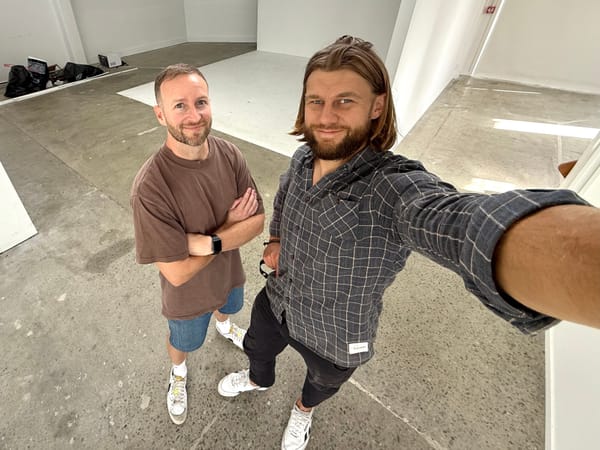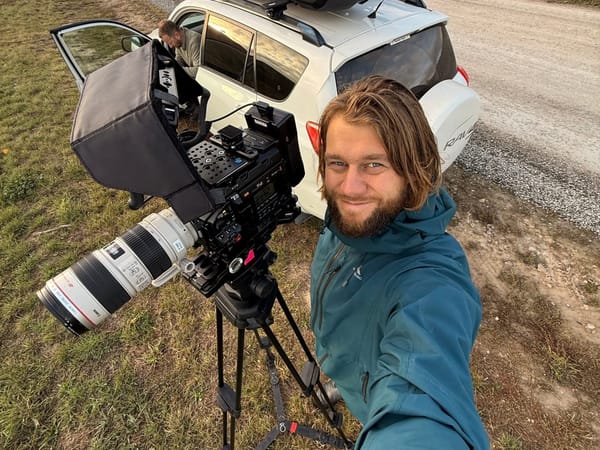B4 Buying Framework
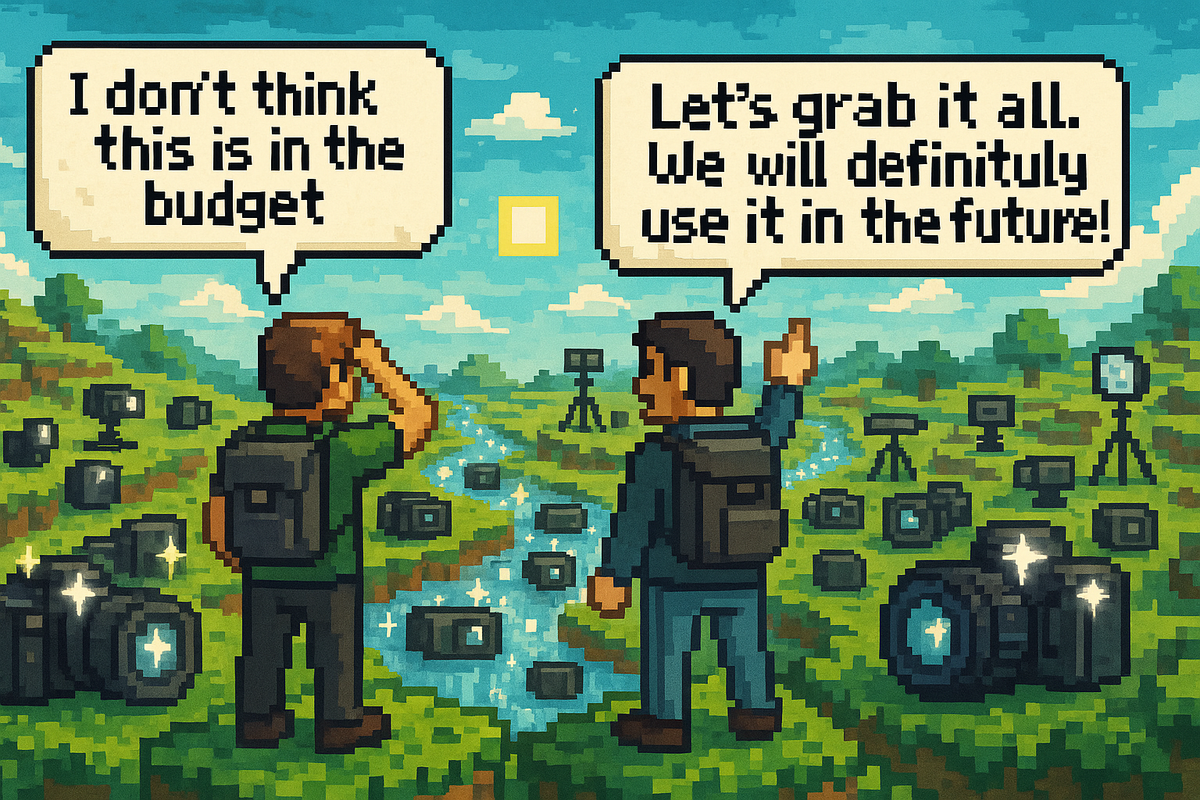
Are you tired of feeling like you need the latest gear to succeed as a filmmaker or creative professional? Are you still paying off that camera you bought years ago while eyeing the newest model?
This week, I'm sharing my B4 Buying Framework to help you make smart purchasing decisions and ensure your equipment investments drive real business growth.
NAB '25 just wrapped, and once again, the filmmaking market is flooded with shiny new tools, camera tech, and software updates promising to revolutionise your work!
Every scroll on social media this week has felt like a parade of tempting new gear all whispering, 'I will make your filmmaking business 1000x better!'
I'll be the first to admit → I'm guilty.
Over the years running a video production business, I have spent tens of thousands of dollars buying gear I didn't need to solve problems for projects I shouldn't have taken on in the first place.
That's why I'm fired up to help newer business owners learn from these mistakes!
The framework I'm about to share has helped me move purchasing decisions away from emotion-based reasoning into the prefrontal cortex.
In other words, gear purchases are a business investment, and those investments should be made with the mind, not the heart. The right equipment should empower us as creative business owners to thrive, not weigh us down financially. I'm not a financial expert. I've just gone through the school of hard knocks with this.
You can grab your copy of the complete B4 Framework template by signing up for Kortex for free → Sign up for Kortex. Create a free account and then → Duplicate this template into your workspace.
Let's dive into the framework!
The B4 Buying Framework
This four-step process will help you think through any new equipment purchase:
- Bottleneck: Identify a core problem you are solving.
- Brainstorm: List every alternate solution to the problem.
- Bridge: Test the best solutions without buying.
- Budget Check: Verify the investment makes financial sense.
Let's start by writing down that tempting new piece of equipment.

Step 1:
Identify the Bottleneck
This first step forces you to articulate exactly what limitation you are trying to overcome in your business. Define the bottleneck or core problem in detail.
Ask yourself:
- What is holding your business back right now?
- What pain points would this purchase solve?
- Why do you need this new item for your business? Be specific.
The trap: Most gear purchases in creative businesses fail because they don't actually solve a core business problem.
Here are some examples of bottlenecks:
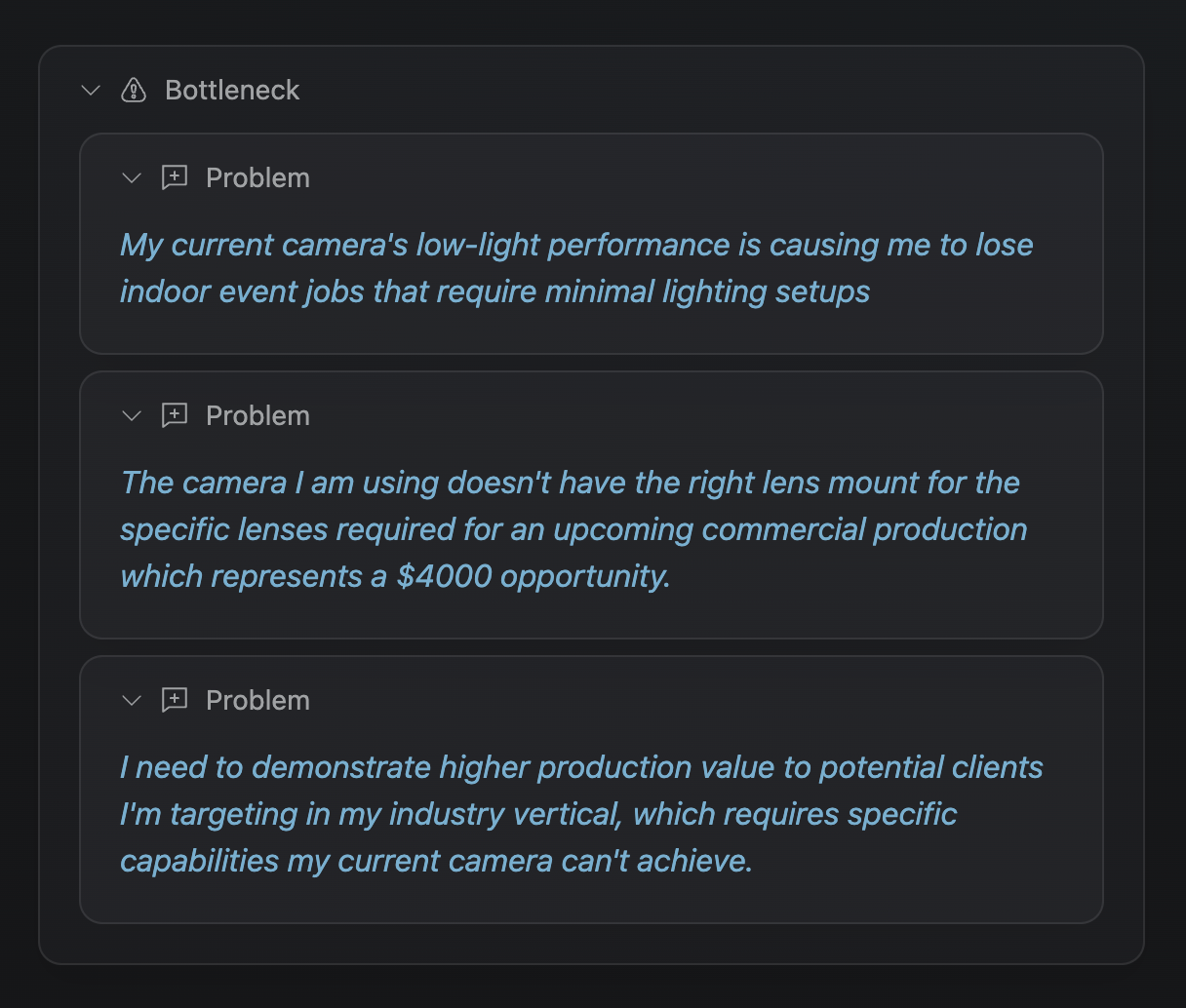
Step 2:
Brainstorm Solutions
Now that you have identified your bottleneck, brainstorm every possible solution to that core problem, especially solutions that don't involve purchasing new gear.
Ask yourself:
- Can these problems be solved with skill acquisition instead of equipment?
- Can I modify my workflow to eliminate the bottleneck entirely?
- How have I or others overcome similar challenges in the past?
- What creative workarounds exist?
Important consideration: New gear often solves one problem while creating several others (for example, storage needs increase with higher quality cameras, transportation needs might increase with more equipment, insurance and maintenance increase, etc)
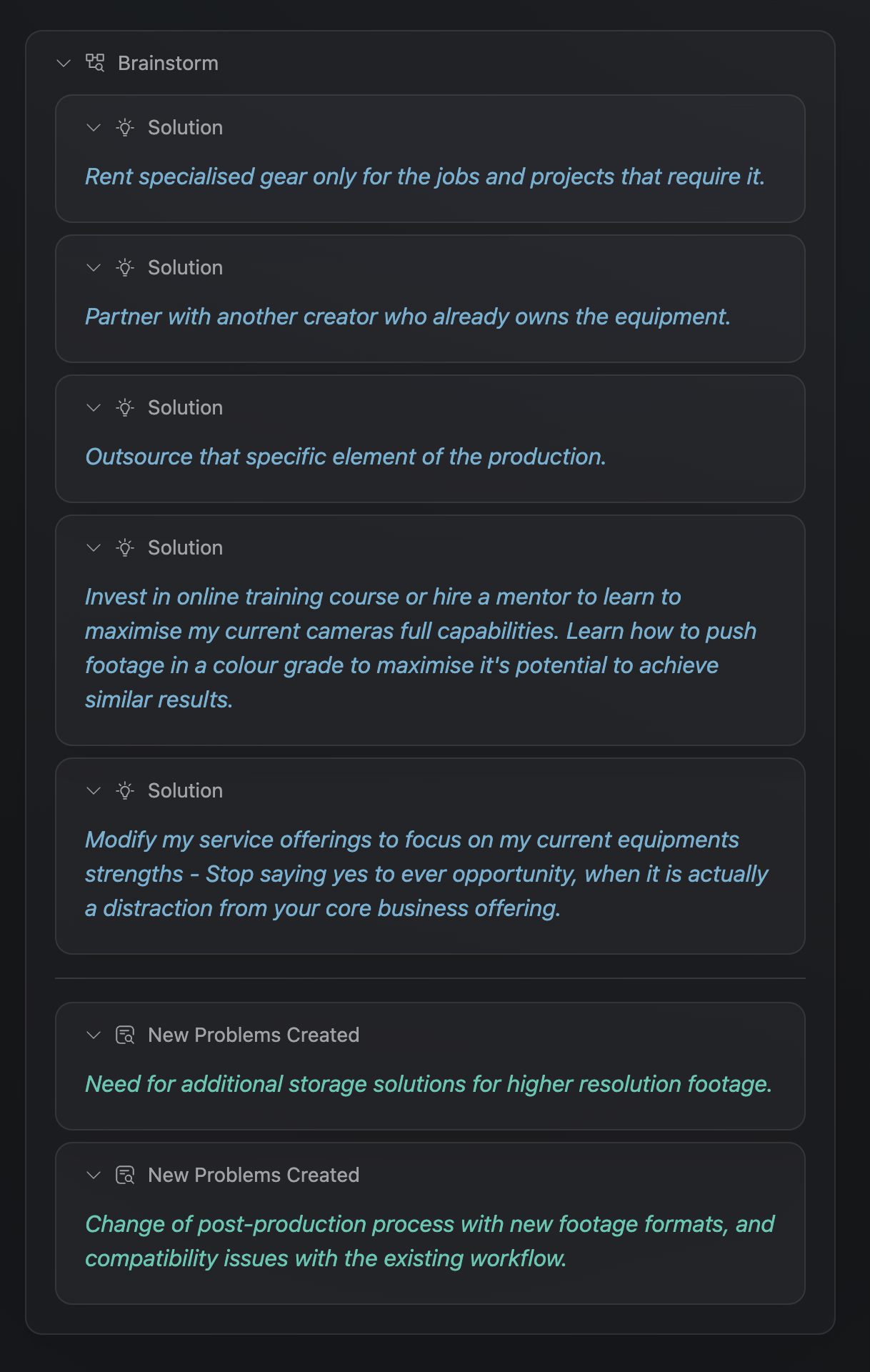
Step 3:
Bridge the Gap
After identifying your bottleneck and brainstorming alternatives, this step involves testing potential solutions before committing to a purchase. This bridging period gives you real-world data to make an informed decision.
Create a specific plan to test your best solutions over the next 1-3 projects:
- Which solutions from your brainstorming will you test first?
- Who can you partner with or learn from to implement these solutions?
- What specific metrics will help you determine if the solution works?
- What is your timeline for testing?
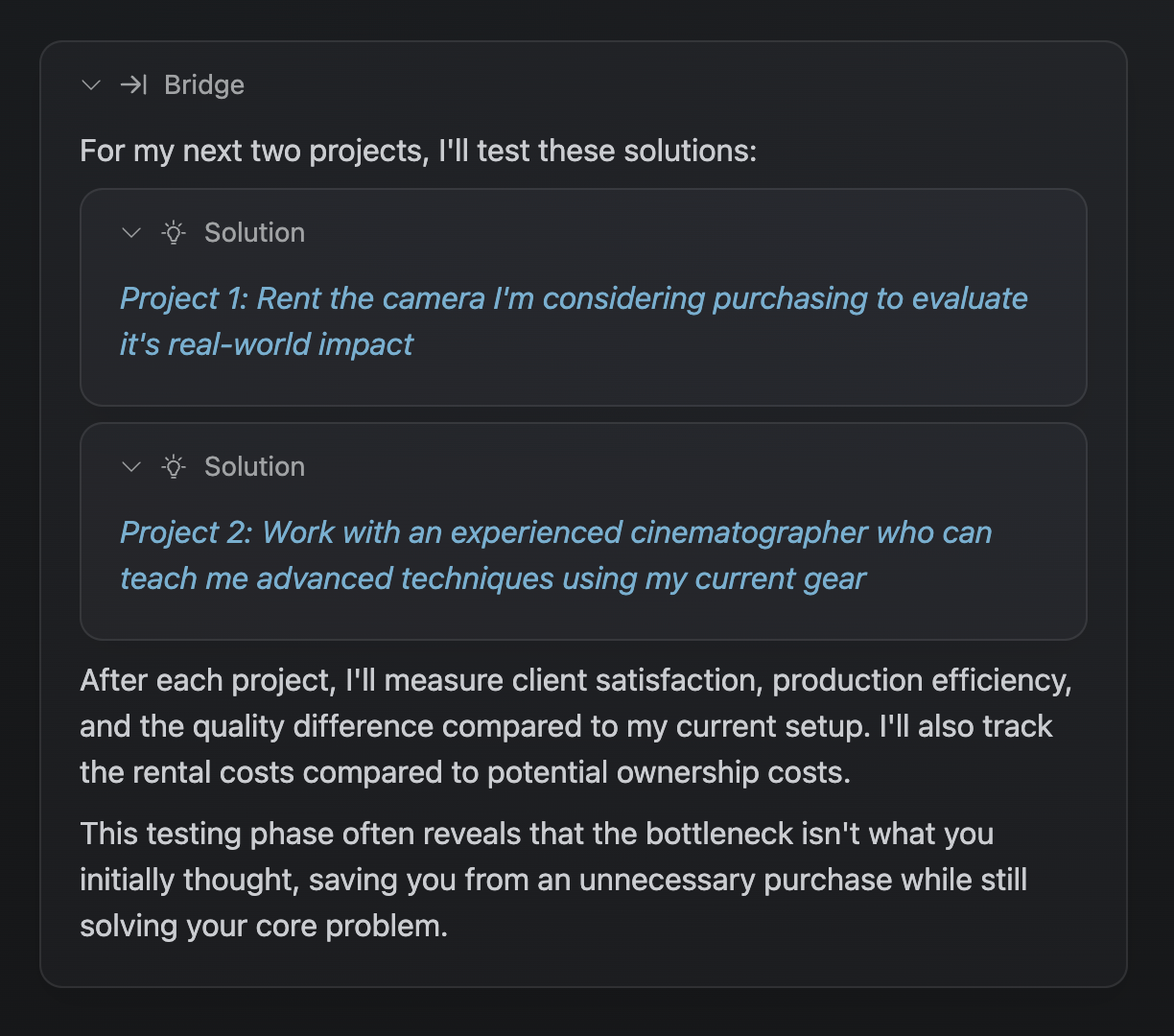
Step 4:
Budget Check
You've thought deeply about your bottleneck, brainstormed alternatives, and tested solutions by bridging the gap. If you're still convinced new gear is the right solution, this final step ensures the purchase makes financial sense for your business.
The hard truth: Most creative professionals get into debt chasing the latest gear, which becomes a financial burden when it doesn't solve their core business problems. Smart investments must demonstrate positive ROI (Return on Investment).
Answer these questions with specific numbers:
Do I have the money available?
- What is my current equipment budget?
- Will this purchase require financing?
- If financing, what's the total cost, including interest?
Is there a more cost-effective solution?
- Have I explored all lower-cost alternatives?
- Is there an older model or refurbished option?
- What about leasing or rental programs?
What is the projected ROI timeline?
- How many additional projects will I need to secure to pay this gear off?
- How quickly can I realistically secure those projects?
- What's my break-even point in months/years?
What's the expected usable lifespan?
- How long before this technology becomes outdated?
- Will this equipment provide a profit before I have to upgrade?
- What's the maintenance and insurance cost over its lifetime?
- What's the resale value trajectory for this equipment?
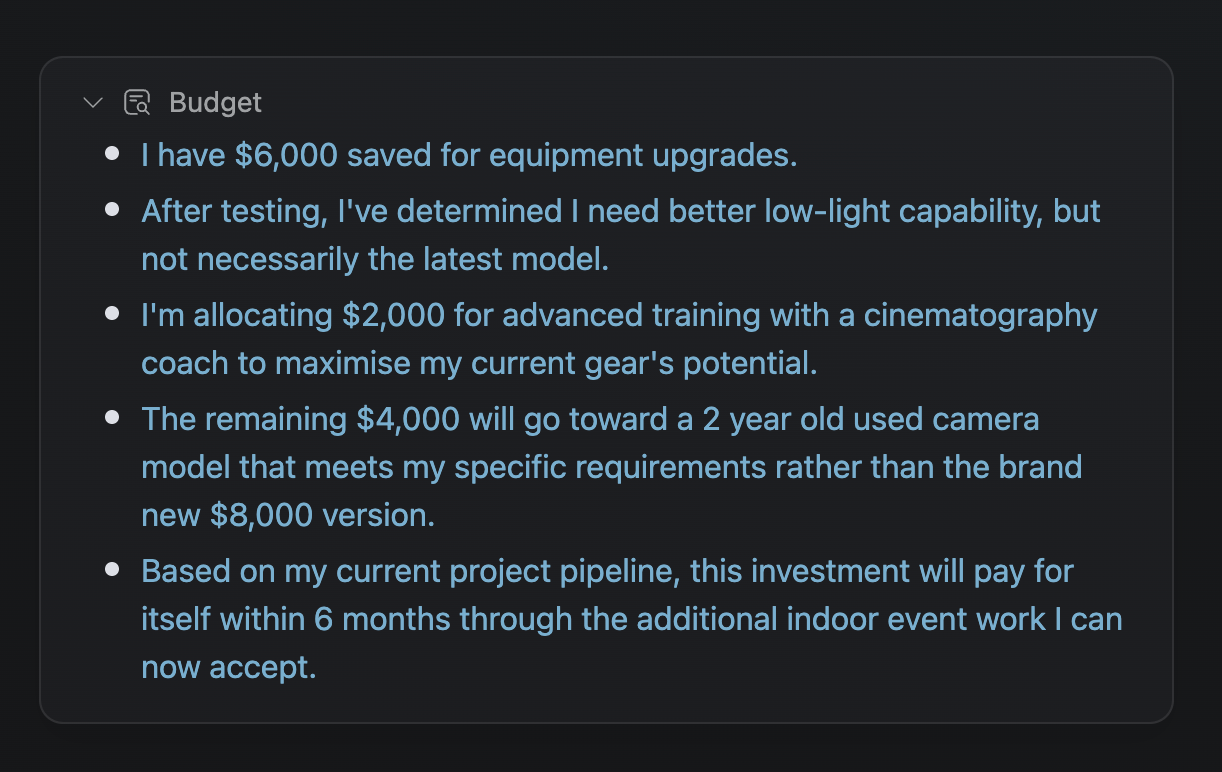
My goal in sharing this is to help creators avoid being slaves to their gear payments.
As a business owner, you are in charge. You have the power to make strategic decisions that will benefit your creative practice long-term.
→ We all make mistakes.
→ I've made a truckload of them
→ Failure is not fatal if we learn from those mistakes.
Want to implement this framework in your business?
You can grab your copy of the complete B4 Framework template by signing up for Kortex for free → Sign up for Kortex.
Kortex is an epic writing platform that I'll discuss in more detail in the coming weeks. Create a free account and then → Duplicate this template into your workspace.

